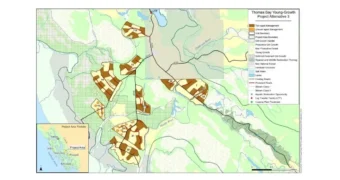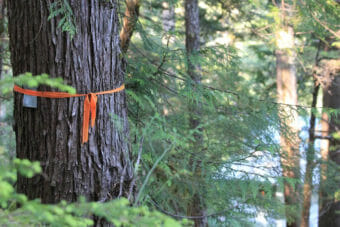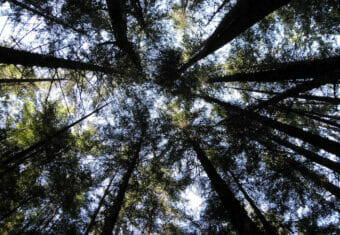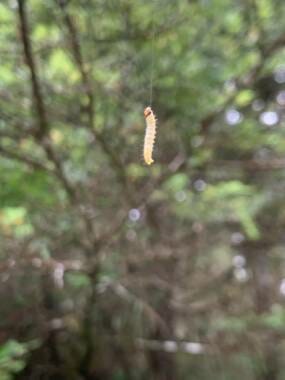
After nearly 30 years in relative dormancy, the western blackheaded budworm population is exploding in Southeast Alaska, leaving swaths of browning hemlock in its path. U.S. Forest Service entomologist Elizabeth Graham and her team have been keeping tabs on the budworms and their effects on the local ecosystem. According to Graham, Southeast has historically been hit harder by western blackheaded budworm outbreaks.
“This is the first major outbreak we’ve had in Southeast since the mid 90s. And then prior to that there was one in the 1950s, they tend to happen on about a 30-40 year rotation. So the caterpillars are there all the time, but they’re not normally at this great a level,” Graham said.
The worm itself is the larva of the budworm moth and is known to feed on the new growth of hemlock buds, causing what’s known as “top kill.” As Graham explains, the warmer summers have spurred the population spike, which is expected to continue over the next several years before naturally crashing. While the damage can seem drastic to onlookers, Graham says the majority of trees will survive and possibly even thrive as a result.
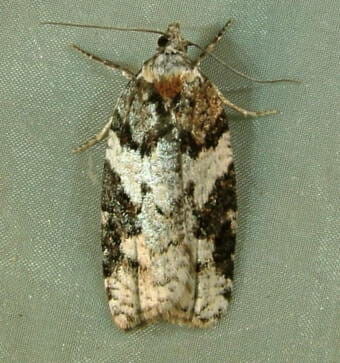
“They’re actually a natural part of our forest,” Graham said. “And so change and disturbances is something that is supposed to happen in the forest in order to keep things dynamic and healthy. As you know, dramatic and worrisome as they are in appearance now, just to remember that our forest has been through this before, and hopefully the healthiest trees will survive, and we’ll maybe open up some more light and get some good berry years after this”
The Forest Service will continue to monitor the budworm infestation as they transition to moths in the coming weeks. Graham urges community members to contribute to their efforts by uploading photos of the moths or other forest pests to the Forest Service’s crowdsourcing app, iNaturalist.

